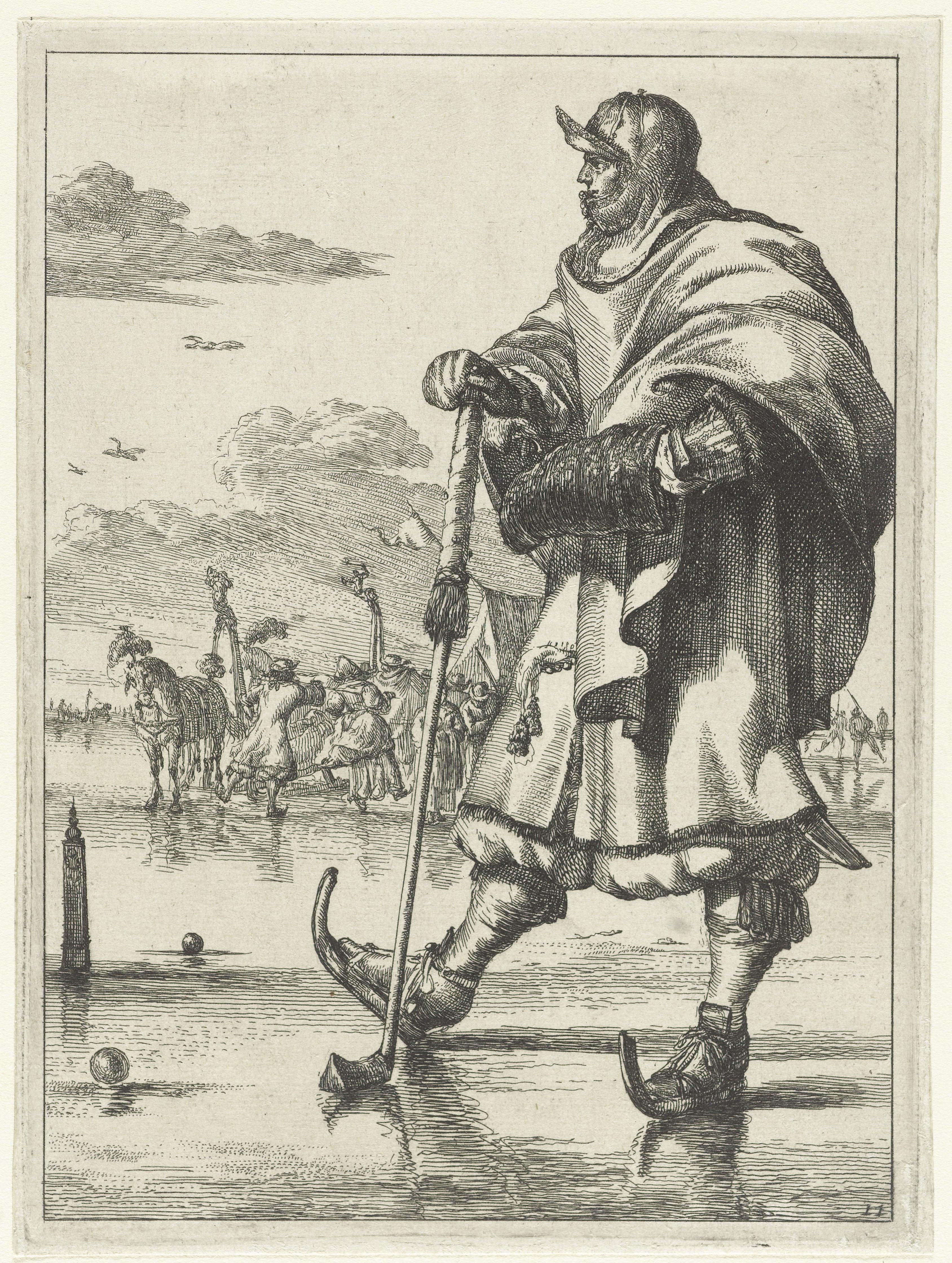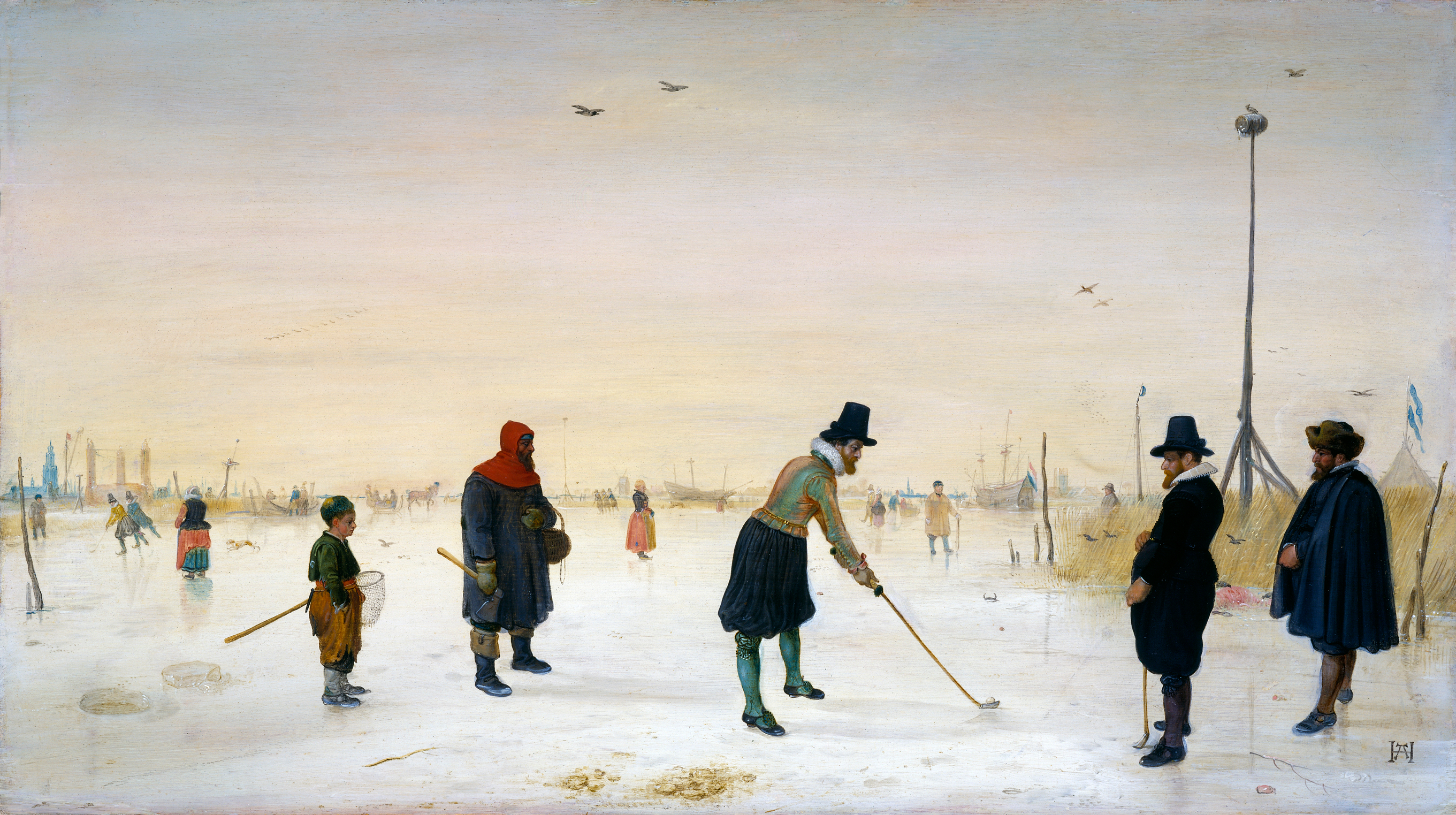Colf on ice
General

Translation Cheryl Richardson, 2019
Colf was a very popular sport in the Low Countries from the Middle Ages to the Golden Age. It was a game played with a ball of wood or leather and a bat called a Colf. It was played on land as well on ice; but there were differences between the two. At the end of the 17th century the colf sport disappeared quite suddenly and a short course variant became popular, usually referred to as Kolf (with a K instead of a C).
History
In the Low Countries, many inconveniences were caused by Colf and city councils were forced to legislate restrictions. For example, there were ordinances and charters that banned Colf inside of a city to prevent damage to property, injuries to bystanders or desecration of churches and cemeteries. But also playing Colf outside of cities was also curbed. In 1377, the Antwerp city council determined that playing Colf would be prohibited during sowing time.
In summer, the vegetation on the fields and meadows was a nuisance for colfers; balls were often and easily lost so early spring and the winter months were the best time to play. In the agricultural society of that time, winter was a less busy period of the year. From spring to fall people were busy in the field but during the winter there was a lot less work to be done. Free time could be spent on other pleasant activities such as parties, skating and Colf on ice.
In the sixteenth and seventeenth centuries the winters were considerably colder than in the 21st century. Climatologists devised the name, ‘Little Ice Age’ for this period. A Brabant chronicle of 1565 speaks of ‘the coldest winter and the most frost in 53 years, and that many people died’ ...
City canals, puddles and even large rivers regularly froze creating spacious and ideal places for Colf on ice. But objections were also raised against this and as a result, for example in Leiden, Colf on ice and on land was prohibited. Still Colf, and especially Colf on ice, remained very popular in the Netherlands for centuries.
There are a large number of paintings, especially from the 16th and 17th centuries, in which the ice field for Colf is depicted. See Images of skating.


Equipment
Originally the first clubs were made entirely of wood, but in the sixteenth century they were leaded or ironed. The grip of the club was protected by a braided leather cover. Details of the finish are particularly recognizable in some Dutch children's portraits. The balls were usually made of elm or beech wood.
Game rules
Colf on ice was likely a short game with posts used as goals. Because the available ice space had to be shared with others, it is likely that Colf on ice was played on whatever small space was available at the time. In various seventeenth-century paintings and prints one often sees posts in the vicinity of the players that may have served as the goal. The fact that these types of posts would have been difficult to see at a greater distance is a second reason to assume that Colf on ice was considered a short game. A third argument can be made that the players are rarely depicted using a "full swing".
Sources
1. Wikipedia